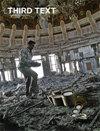Humour and the Commodification of Suffering
IF 0.1
3区 艺术学
0 ART
引用次数: 2
Abstract
Abstract The emphasis on precarity and conflict in contemporary art has meant that artists from sites of crisis are frequently framed as ‘local informants’, expected to perform cultural capital by narrating experiences of marginality and political conflict. This has meant that in contrast to the sphere of popular culture where marginalised groups are expected to engage humour to ‘perform’ their identity (eg POC, female, queer stand-up comedians), performances of ‘sincerity’, ‘authenticity’ and truth remain central to intercultural encounters in contemporary art. Framed by discussion of how humour in contemporary art differs to ‘everyday’ visual forms (memes, graffiti etc), this article considers how humour is used as a political strategy by artists from diverse sites of crisis: Greece, Palestine and Indigenous Australia. Analysing the work of artists Khaled Hourani, Richard Bell, and Kostis Stafylakis, it demonstrates how humour in contemporary art contributes to three forms of cultural resilience: ‘authenticity’, ‘enactment’, and ‘placemaking’.幽默与苦难的教化
当代艺术对不稳定性和冲突的强调意味着,来自危机地区的艺术家经常被视为“当地线人”,他们被期望通过叙述边缘化和政治冲突的经历来表现文化资本。这意味着,在流行文化领域,边缘群体被期望用幽默来“表现”他们的身份(例如POC、女性、酷儿单口喜剧演员),而在当代艺术中,“真诚”、“真实”和真相的表现仍然是跨文化接触的核心。通过讨论当代艺术中的幽默与“日常”视觉形式(模因、涂鸦等)的不同,本文考虑了来自希腊、巴勒斯坦和澳大利亚原住民等不同危机地区的艺术家如何将幽默作为一种政治策略。本文分析了艺术家Khaled Hourani、Richard Bell和Kostis Stafylakis的作品,展示了当代艺术中的幽默如何有助于三种形式的文化弹性:“真实性”、“制定性”和“场所营造性”。
本文章由计算机程序翻译,如有差异,请以英文原文为准。
求助全文
约1分钟内获得全文
求助全文
来源期刊

Third Text
ART-
CiteScore
0.40
自引率
0.00%
发文量
39
期刊介绍:
Third Text is an international scholarly journal dedicated to providing critical perspectives on art and visual culture. The journal examines the theoretical and historical ground by which the West legitimises its position as the ultimate arbiter of what is significant within this field. Established in 1987, the journal provides a forum for the discussion and (re)appraisal of theory and practice of art, art history and criticism, and the work of artists hitherto marginalised through racial, gender, religious and cultural differences. Dealing with diversity of art practices - visual arts, sculpture, installation, performance, photography, video and film.
 求助内容:
求助内容: 应助结果提醒方式:
应助结果提醒方式:


